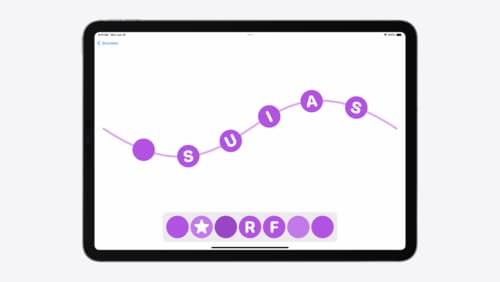How SwiftUI works under the hood?
Asked on 2024-09-07
1 search
SwiftUI operates under the hood by using a declarative approach to define user interfaces. Here are some key points about how it works:
-
Declarative Views: SwiftUI views are descriptions of what the current state of the UI should be. They are not long-lived object instances that receive imperative commands over time. Instead, they are value types defined using structs. SwiftUI takes these descriptions and creates an efficient data structure to represent them, which is used to produce different outputs like what's shown on screen, gestures, and accessibility features.
-
State-Driven Updates: SwiftUI is state-driven, meaning that when your view state changes, SwiftUI automatically updates the UI. This eliminates boilerplate code and reduces update bugs. SwiftUI maintains a representation of the user interface behind the scenes, and as data changes, new view values are created and used to update the UI.
-
Interoperability: SwiftUI offers seamless interoperability with UIKit and AppKit. You can use views or view controllers from these frameworks within SwiftUI using protocols like
UIViewRepresentable. Conversely, you can embed SwiftUI views into UIKit or AppKit view hierarchies using classes likeUIHostingController. -
Animations and Transitions: SwiftUI builds on data-driven updates to provide animations. You can wrap state changes with animations, and SwiftUI applies default or custom transitions to the views.
-
Platform-Specific APIs: While SwiftUI provides a common set of components across platforms, it also offers specialized APIs for each platform, allowing you to tailor your app's UI to the unique characteristics of each device.
For more detailed insights, you can refer to the SwiftUI essentials session from WWDC 2024.

SwiftUI essentials
Join us on a tour of SwiftUI, Apple’s declarative user interface framework. Learn essential concepts for building apps in SwiftUI, like views, state variables, and layout. Discover the breadth of APIs for building fully featured experiences and crafting unique custom components. Whether you’re brand new to SwiftUI or an experienced developer, you’ll learn how to take advantage of what SwiftUI has to offer when building great apps.

Platforms State of the Union
Discover the newest advancements on Apple platforms.

Enhance your UI animations and transitions
Explore how to adopt the zoom transition in navigation and presentations to increase the sense of continuity in your app, and learn how to animate UIKit views with SwiftUI animations to make it easier to build animations that feel continuous.
